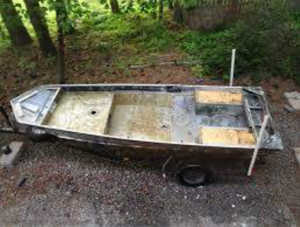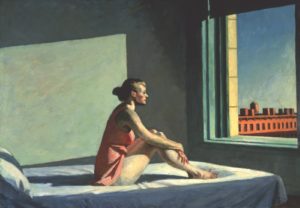Progym: Proverb
“Give the camera, put it away, and start to draw, because if you draw, you see the beauty of things properly” (de Botton 43:58).
In this quote, taken from Alain de Botton’s film The Art of Travel, he paraphrases the message of the English philosopher John Ruskin. I like this quote, both because the message is both very relatable and understandable, but because there is also some humor to it. Having English parents and thus being raised on British television and comedy, I can see the subtle, dry humor in de Botton’s philosophy, including with this quote. He seems to present Ruskin’s message in almost the most direct method possible, both for effect and to help prove his point. This quote, as well as his choice to use Ruskin, demonstrate in short de Botton’s very English perspective on travel.
Ruskin, according to de Botton, despised the attitudes of tourists, who he thought “looked at things but didn’t really notice them” (de Botton 43:44). Ruskin then urges us to really make an effort to not just capture images because we feel obligated to, but instead to really appreciate them. De Botton translates this to the modern-day with the example of cameras, and in this scene, he proceeds to collect the cameras of the Japanese tourist group he is with and make them draw the English church they are examining. This, accompanied by the chuckles of the tourists and his clumsily collecting the many cameras really makes the scene.
Some may disagree with de Botton’s argument here and say that photographs and postcards and tacky wall-art are important pieces of the travel experience that help you remember it once you return home. You might say that “a picture is worth a thousand words” and that you will never be able to recall just how wonderful your time away from home was unless you can really see it. This, it can be argued, is exactly his point, because we will always remember it better and also enjoy it more in the moment if we aren’t focused on getting the image that will allow you to see it later. If you let it sink in while you are there, perhaps by drawing it, you will remember the full moment better.
You could compare this idea to the many people who decide to travel with no plan. Sometimes, if you worry over the details, obsess about having the best possible time on your vacation, you ruin the moment. Just as focusing on the perfect picture takes you out of the moment, so does thinking only about the “next thing.”
Personally, I have begun following a similar idea over the last few years. When I was younger I would take far too many pictures, stopping to take poorly-framed, underlit snaps of whatever attraction. But now, I have decided to only take pictures that I think I will actually like to see later. I can find an image of the lighthouse at Negril in Jamaica, but not a picture of myself with the eccentric guide who brought us off the beaten track down the rocks past the building. Things like this are worth capturing because they enhance the moment, they don’t distract you from it. Instead, I can put my mind to simply enjoying my vacation, in the moment, not worrying about whatever else.
De Botton’s quote here, in its odd humor and awkwardness, and the amusing scene it is a part of, is particularly enlightening to me because it puts into words an idea I have been acting on for a while, but haven’t consciously thought about. It goes against many of our impulses as travelers, but it is also highly rewarding and worthwhile, and de Botton’s method of illustrating it is excellent.


 Edward Hopper, Morning Sun (1952)
Edward Hopper, Morning Sun (1952)